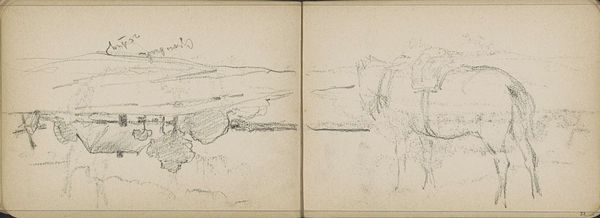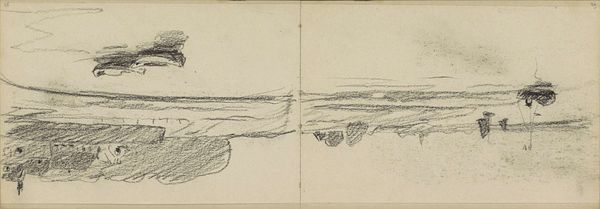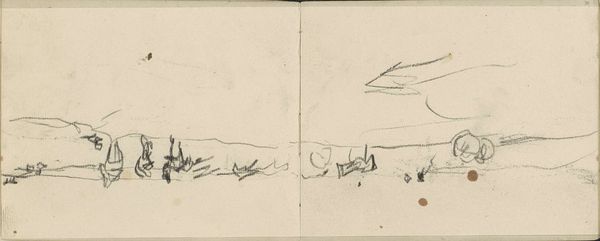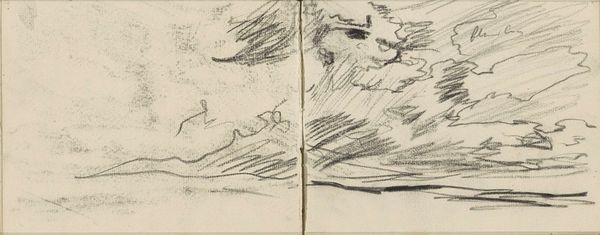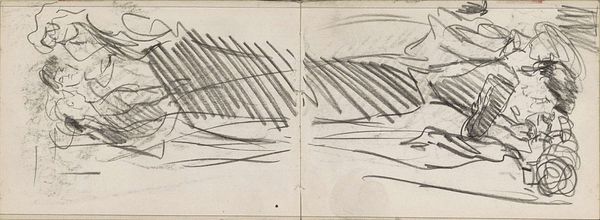
drawing, pencil
#
drawing
#
dutch-golden-age
#
landscape
#
pencil
#
realism
Copyright: Rijks Museum: Open Domain
Curator: Looking at this pencil drawing by George Hendrik Breitner, entitled "Landschap met boerderijen," or "Landscape with Farmhouses," dating from around 1883-1885…it feels very…unfinished? Almost like a fleeting thought captured on paper. Editor: Absolutely. There’s a raw immediacy here. The hurried, almost nervous lines evoke a feeling of quiet urgency. You can practically feel the artist grabbing their sketchbook, compelled to capture something ephemeral. Is it just me, or is it a bit unsettling, even? Curator: Unsettling? Tell me more. Editor: Well, it's this liminal space it occupies, right? Neither fully formed nor entirely absent. These farmhouses— barely more than suggested forms— they represent structures of stability, yet here, they're rendered as something transient, fragile. It asks questions about permanence, our connection to land, themes prevalent during the industrial revolution and mass migrations of that era. Curator: I like that. Transient, yes. It’s less about capturing a picturesque scene and more about documenting a specific moment in time, a particular quality of light, or even an atmosphere. Breitner was, after all, drawn to the realities of urban life in Amsterdam. Could this, in a way, be a similar form of social observation applied to the rural landscape? Editor: Perhaps a yearning for it too? A visual contrast to the pressures and rapid changes he was witnessing in the city? He might have been subconsciously seeking solace in an imagined idyll, even if rendered with that characteristic starkness. It makes you wonder what these farm communities were facing, if any of that tension made its way onto this drawing. Curator: I think that tension is inherent to the drawing. It invites a longer consideration, too, regarding Dutch identity at the time—the complicated relationship between urban progress and an enduring connection to the land. It also challenges the viewer, don’t you think? To complete the narrative suggested by those sketches? Editor: I do. And maybe the discomfort, for me at least, comes from realizing that that narrative, and any kind of idea of an "idyll" would ultimately erase the lives of people who work and live there, obscuring their lived reality within myth. That said, maybe this wasn’t Breitner’s intention, so I’m reading into it through a modern lens! It still stands as a record, a mood board that triggers thought about change and how we deal with our roots. Curator: So, in a way, we are compelled to bring our own contemporary realities into the conversation when we face older art…which is perhaps inevitable. I shall certainly ponder it more the next time I drive past a Dutch farm! Editor: And next time I might join you—armed with theory.
Comments
No comments
Be the first to comment and join the conversation on the ultimate creative platform.
